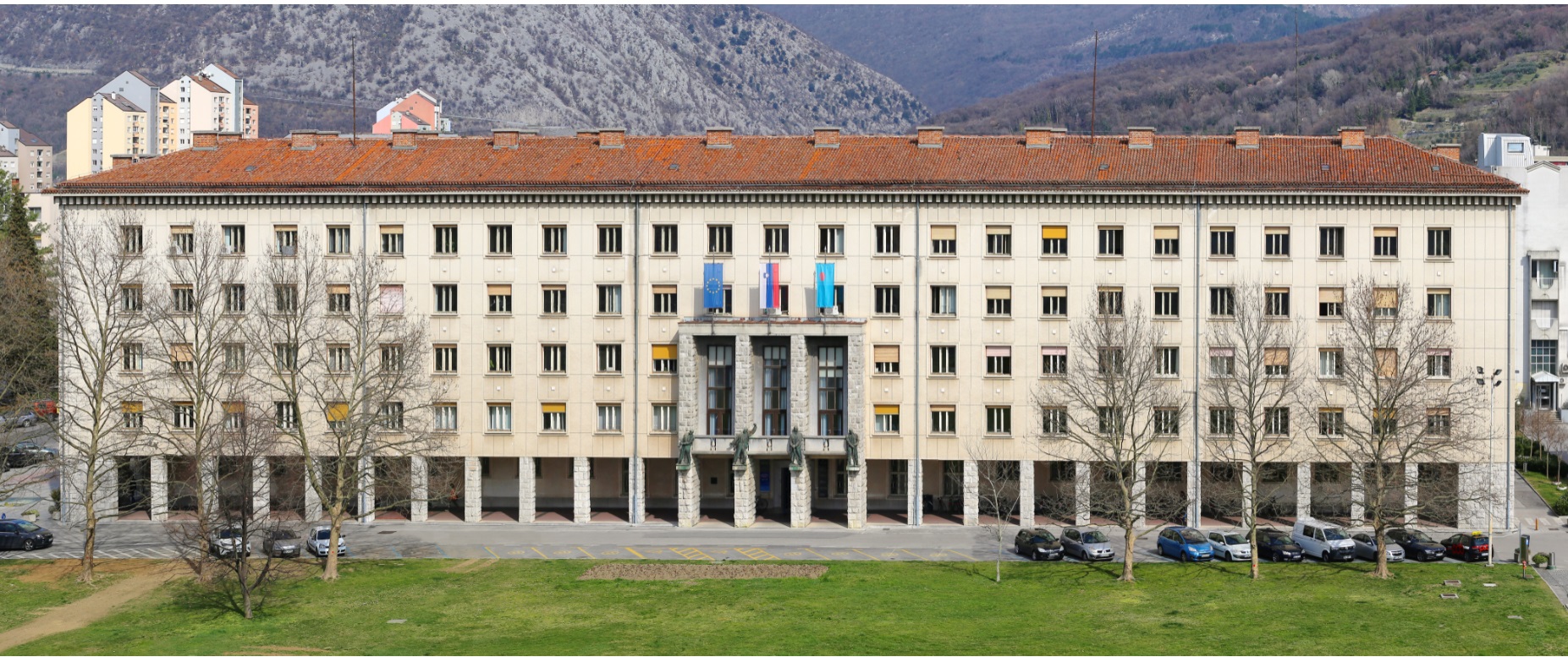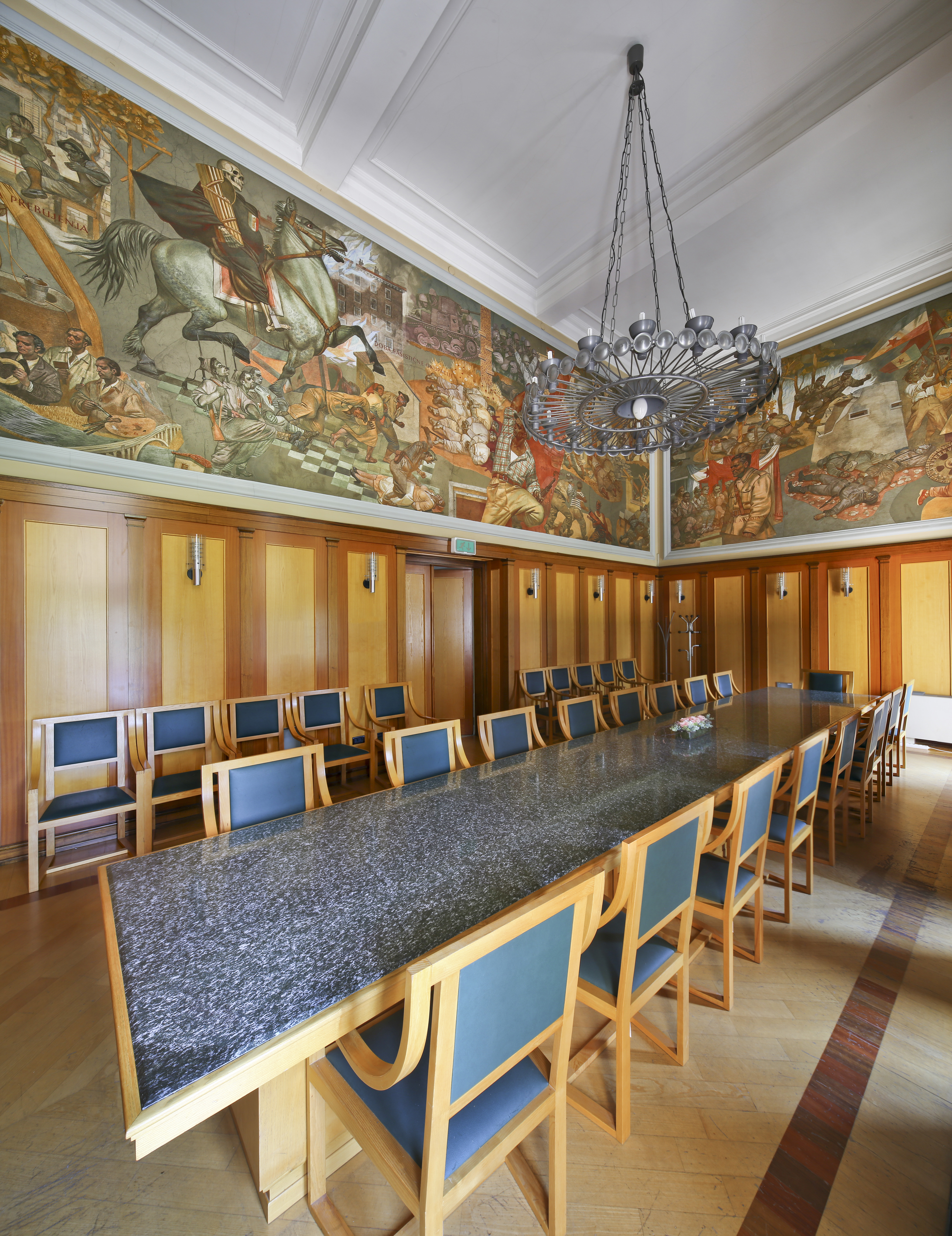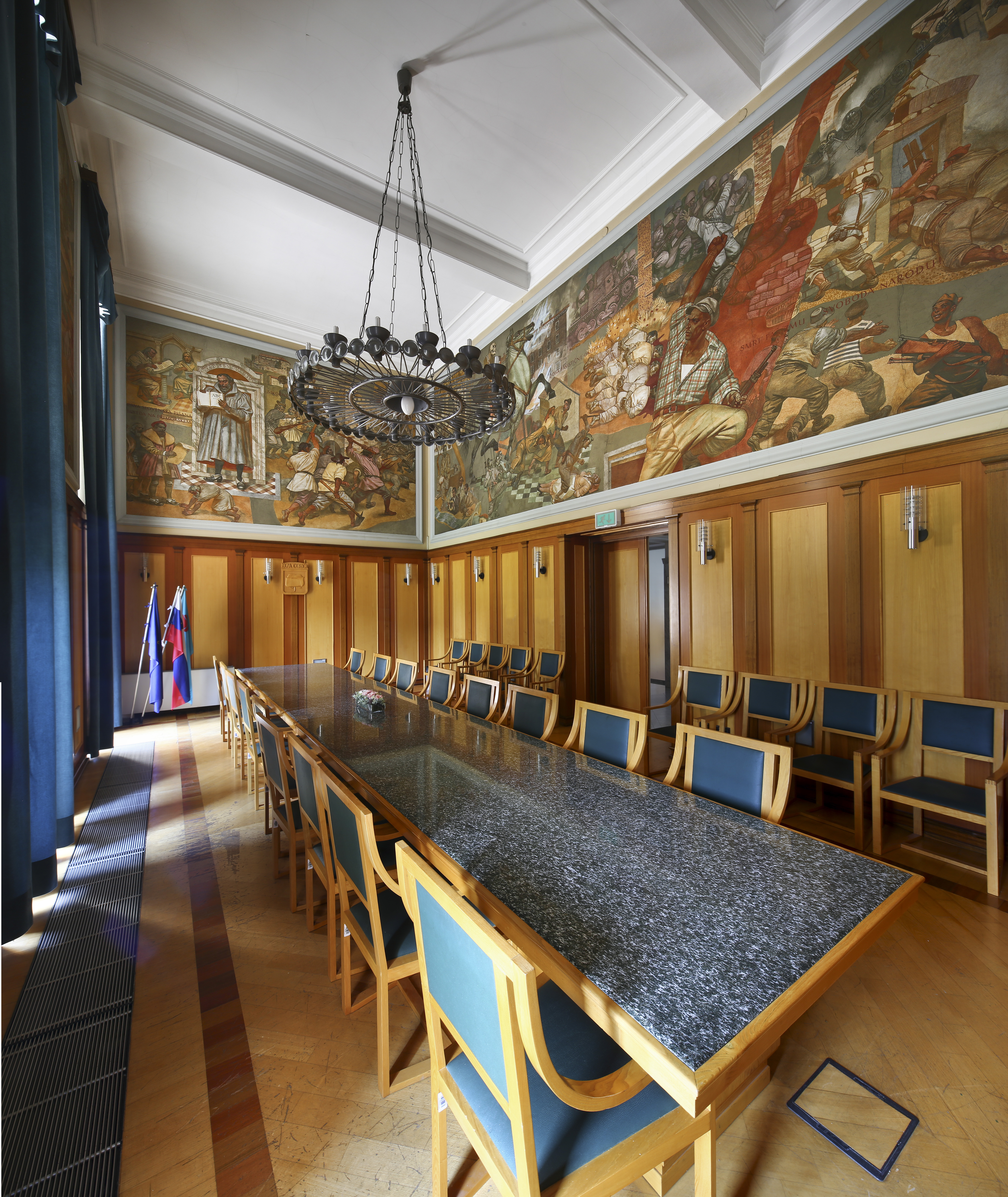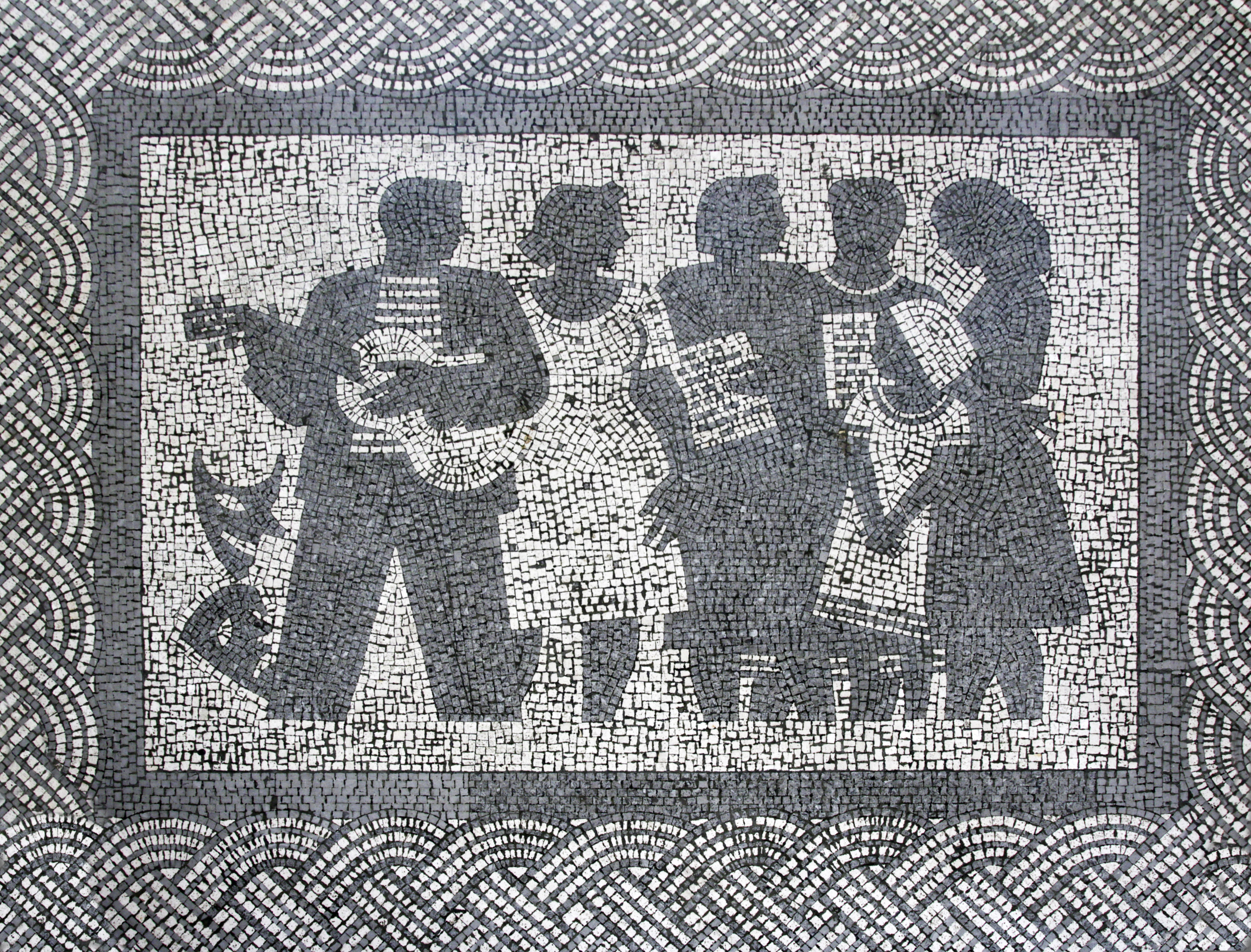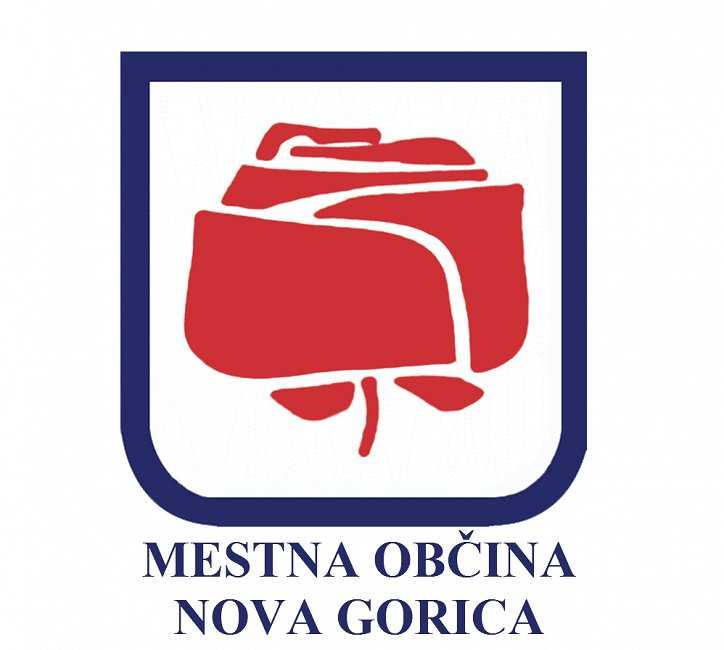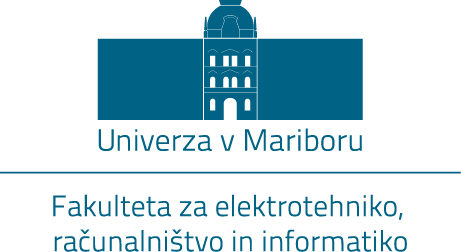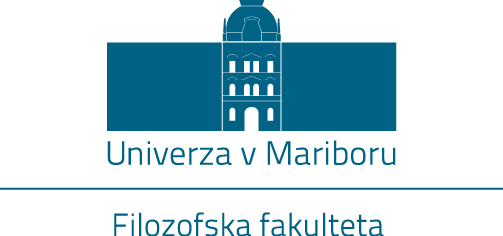The building of the former District/Governing People’s Committee had a central role as early as in the first plans for a new city. Together with the unrealized buildings of the Communist Party’s Governing Committee, the City People’s Committee and the cultural centre it was supposed to form a cultural and administrative centre of the city and represent the power of the new socialist regime. The commissions for the architecture and the art furnishings were taken over by the state’s central artists of the first decade after the war: architect Vinko Glanz (1902–1977), sculptor Boris Kalin (1905‒1975) and painter Slavko Pengov (1908–1966), while a part of the task was entrusted to Tone Žnidarščič (1923‒2007), at that time a student of Pengov. The trio of renowned masters was also included in other projects of state importance, the first time in Tito’s summer residence – Villa Bled, and the last time in the building of the People’s Assembly of the People’s Republic of Slovenia in Ljubljana, present-day Slovenian parliament, where they used a number of models that they tested for the first time precisely in Nova Gorica.
The palace with an interior atrium and an outer stone colonnade extending across the entire width of the main façade, was built between 1949 and 1953 and shows echoes of a traditional construction of city palaces. The central emphasis on the mighty, but minimalistically designed exterior is a portal made of roughly cut stone pillars, decorated with four monumental sculptures of rebels, a partisan and a farmer, made by Kalin. The iconography, which highlights the importance of the past national liberation struggle, is continued in the interior, on the floor mosaics, and especially in Pengov’s frescoes in the “green hall”. Depicted on the frieze surrounding the fresco is a socialist interpretation of the history of Primorska (the Slovene Littoral), from the Reformation to the end of World War II. The painting represents one of the rare extensive examples of historic painting in Slovene art.
